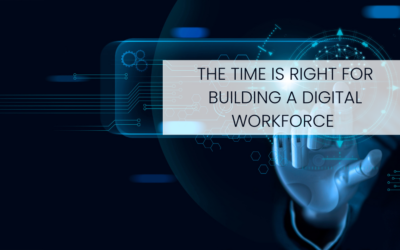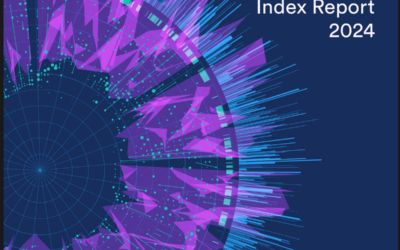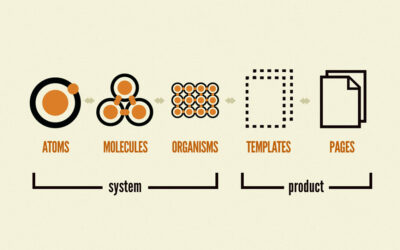
INTRODUCTION
If you haven’t already read our white paper, How Quiet Innovation Leads to Game-Changing Manufacturing Advancements, it’s suggested you do so before diving into this article because before you can explore the world of Industrial AI, your organization must have a strong technological foundation in place for digital transformation to happen. You need a strong technology foundation in order for industrial AI to make sense.
WHAT IS INDUSTRIAL AI?
In simple terms, Artificial Intelligence is software executing processes typically executed by human intelligence. Implementing Artificial Intelligence is creating a machine intelligent enough to think and act as a human would execute repetitive processes. With AI solutions, programmable logic controllers can respond automatically to new information and make alterations without human intervention.
Industrial AI takes Artificial Intelligence and applies it to industrial problems. Industrial Artificial Intelligence is typically applied to processes or tasks that are too challenging, tedious, and/or time-consuming for employees to execute.1 According to the National Institute of Standards and Technology, Industrial Artificial Intelligence is categorized into rules-based or machine learning tools.1 Think of rules-based tools as “if-then” situations and machine learning tools as algorithms that adapt to their environment. Not surprisingly, rules-based tools are typically easier for humans to understand, but rules-based Industrial AI cannot solve every problem.
Machine Learning is another buzzword that floats around conversations about Industry 4.0, and it’s important to know how ML ties in with AI. Machine Learning algorithms are a part of Artificial Intelligence that receives information in order to learn and adapt to whatever the desired response of the algorithm is.1 Since the algorithm learns from the information it receives, you can imagine the large amounts of data produced due to the trial-and-error process to determine correct behavior. Having a strong data capturing and utilization strategy in place is crucial to manufacturers, and can be explored in our previously mentioned white paper, How Quiet Innovation Leads to Game-Changing Manufacturing Advancements.
IMPLEMENTATION OF INDUSTRIAL AI
Industrial Artificial Intelligence can be applied across multiple areas of manufacturing organizations such as product development, machine maintenance, factory-floor performance analytics, supply chain/logistics, inventory, and more. A big one for manufacturers is the utilization of AI to predict asset malfunction. The possibilities are infinite, but it’s all about finding what makes the most sense for each organization.
A simple first step to implementing Industrial AI is to think about what data, both structured and unstructured, your manufacturing organization already produces today. From there, start to explore what hidden patterns are occurring to turn the existing data into actionable insights. Finally, work with a technologist to determine where and how Artificial Intelligence can be applied to areas of the business. Think about how predictive modeling, image/video analysis, recommender systems, forecasting models, and Natural Language Processing (NPL) could benefit your manufacturing organization.
Although AI can be applied to various areas of the business, and it can sometimes sound as simple as determining where patterns occur within manufacturing processes, strategic steps must take place in order to successfully scale your AI and data science implementation. From due diligence to model deployment, it’s important that you’re not thinking too broadly or too narrowly about your AI implementation plans.
It’s important to first set your Artificial Intelligence strategy and choose areas of the business where AI makes the most sense to implement within a reasonable amount of time.2 Wherever your organization utilizes Artificial Intelligence, the implementation should significantly reduce costs and/or enhance your customer experience to make the technological investment worthwhile. The next and possibly most important step is building the right team. You may have people in-house that you can educate to be a part of the AI team, but you may also want or have to consider partnering with technologists to build the strongest team to be responsible for Artificial Intelligence projects. Your AI team should include members from IT, leadership, analytics, and potentially other specific areas of the business, depending on the area of implementation. Once you have a solid strategy, the right team, and deployment occurs, preparing for change is crucial, but often forgotten. Organizations should consider the potential impact that AI implementations will have on upstream and downstream processes and implement a plan for how to address such changes.2
THE POWER OF INDUSTRIAL AI
So, you know what Industrial AI is and how best to implement it organizationally, but the million-dollar question is why? Why should manufacturers consider jumping into their Artificial Intelligence journeys?
Industrial Artificial Intelligence can impact manufacturers by offering cost savings, increased revenue, increased productivity, personalized customer experiences, and increased sales effectiveness. The big data analytics produced with AI can improve performance across the entire organization while also creating the ability to monitor operations remotely.3 Artificial Intelligence can also drastically improve employees’ experience at the organization. With automation solutions involving AI, manufacturers are able to reallocate part- and full-time employees to other areas of the business, removing them from the previously human-executed repetitive tasks. Technologies like Artificial Intelligence also drastically improve factory safety, as AI solutions do not incur the same risk of error and injury.3 Video, document scanning, and image analysis with AI can also impact the factory’s productivity or safety protocols.
Enterprise Artificial Intelligence can also aid in creating connected factories and digital supply chains. Manufacturers can save on inventory carrying costs, reduce unused capacity expenditures, and optimize equipment utilization with a connected factory. In addition to a connected factory floor, manufacturers also need to digitize their supply chains. This is another area where Industrial AI’s benefits can be maximized. With a digitized supply chain, manufacturers can reduce analytical costs and experience a reduction in material costs, inventory levels, inventory costs, and transportation costs.
CONTACT US
Ready to start your AI implementation journey? Talk to the folks at ThoughtFocus. You can reach them at betterfuturefaster@thoughtfocus.com.
Need technical marketing content, contact Ben Bradley at Macon Raine.
RESOURCES
- “A.I. for Smarter Factories: The World of Industrial Artificial Intelligence”, Michael Sharp, September 2, 2020
- “Getting AI to Scale”, Tim Fountaine, Brian McCarthy, and Tamim Saleh, April 13, 2021
- “7 Benefits of AI in Manufacturing”, Ryan King, March 16, 2020




